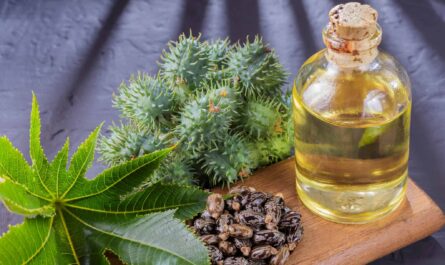Over the years, conventional urea has been one of the most commonly used nitrogen fertilizers for farmers across the world. However, it comes with some inherent limitations like high nitrogen loss rates and the need for multiple applications. This negatively impacts both crop yields and the environment. Sulfur Coated Urea (SCU) was developed as a solution to address these key limitations and make fertilizer application more sustainable. Let’s take a closer look at this innovative slow release nitrogen fertilizer.
What is Sulfur Coated Urea?
An SCU pellet consists of a core of ordinary prilled or granular urea enclosed within a sulfur coating. When applied to soil, the sulfur coating acts as a barrier, slowing the release of nitrogen from the urea core. This extends the availability of nitrogen to plants over an extended period, from 3 to 6 months depending on soil and weather conditions. The slow release of nitrogen matches plants’ nutrient demand throughout different growth stages, leading to higher fertilizer use efficiency.
Advantages of SCU Over Conventional Urea
One of the major problems with conventional urea is the high rate of nitrogen loss through leaching or volatilization into the air as ammonia gas. Research has shown that SCU can retain 80-90% of the applied nitrogen in the soil, resulting in much higher nitrogen uptake by crops compared to other fertilizers. This translates to significant agronomic and environmental benefits:
– Higher Yield Potential: By synchronizing nitrogen release with plant uptake, SCU ensures continuous nitrogen supply for optimum plant growth and productivity. Field trials have demonstrated yield increases of 5-15% compared to other sources.
– Fewer Application Rates: With its extended availability, SCU requires fewer top-up applications. This saves on labor and reduces application costs for farmers.
– Reduced Nitrogen Loss: The slow release nature and higher nitrogen retention ability of SCU minimizes nitrogen losses due to leaching or ammonia volatilization.
– Lower Environmental Impact: With much lower nitrogen losses, SCU greatly decreases the risk of nitrogen polluting ground and surface water resources through run-off. It is beneficial for the environment.
Forms and Applications of SCU
SCU fertilizers are commercially available in two main forms – powder-coated and prilled/granular. The powder-coated variety has finer particles that release nitrogen faster, while the prilled/granular type has a thicker coating releasing nitrogen for a longer duration.
Some common application methods of SCU include:
– Broadcasting: A popular method for rice, wheat and extensive cropping. SCU is uniformly scattered over soil surface prior to planting.
– Basin Placement: Used for sugarcane and other row crops. Small amounts of SCU are placed in basins around young plants at set intervals.
– Fertigation: Fertilizer is dissolved and fed to crops through drip or sprinkler irrigation systems, ensuring efficient utilization.
– Top-dressing: SCU is applied on top of the soil after a crop is established to supply nitrogen during the growth stage.
– Seed Treatment: Coating SCU particles over seeds improves germination and early growth particularly in stress conditions.
Wider Adoption of SCU Globally
With rising awareness about the multiple advantages of SCU, its utilization is growing rapidly all over the world. According to a recent report, the global SCU fertilizer market is forecast to reach $5 billion by 2025, growing at over 6% annually. China and India, being major agrarian economies, account for the bulk of global consumption currently.
In the United States as well, the proportion of urea replaced by SCU has increased from 5% in the 1990s to over 20% today across various field crops and horticultural produce. Brazil too has witnessed a significant transition from conventional nitrogen sources to SCU based on the positive research and farmer experiences. Overall, SCU has certainly emerged as a more sustainable and cost-effective fertilizer solution globally.
Conclusion
As population rises and cropland area remains limited, maximizing yields from existing farmland is critical to ensure global food security. SCU fertilizer has been proven to boost crop productivity and quality substantially while supporting resource efficiency and environmental stewardship. Its slow-release properties address the inherent issues of conventional nitrogen fertilizers. With ongoing agricultural modernization worldwide, SCU adoption holds immense potential to make fertilizer use and farm practices more optimized and sustainable in the long run.
*Note:
1.Source: Coherent Market Insights, Public sources, Desk research
2.We have leveraged AI tools to mine information and compile it




